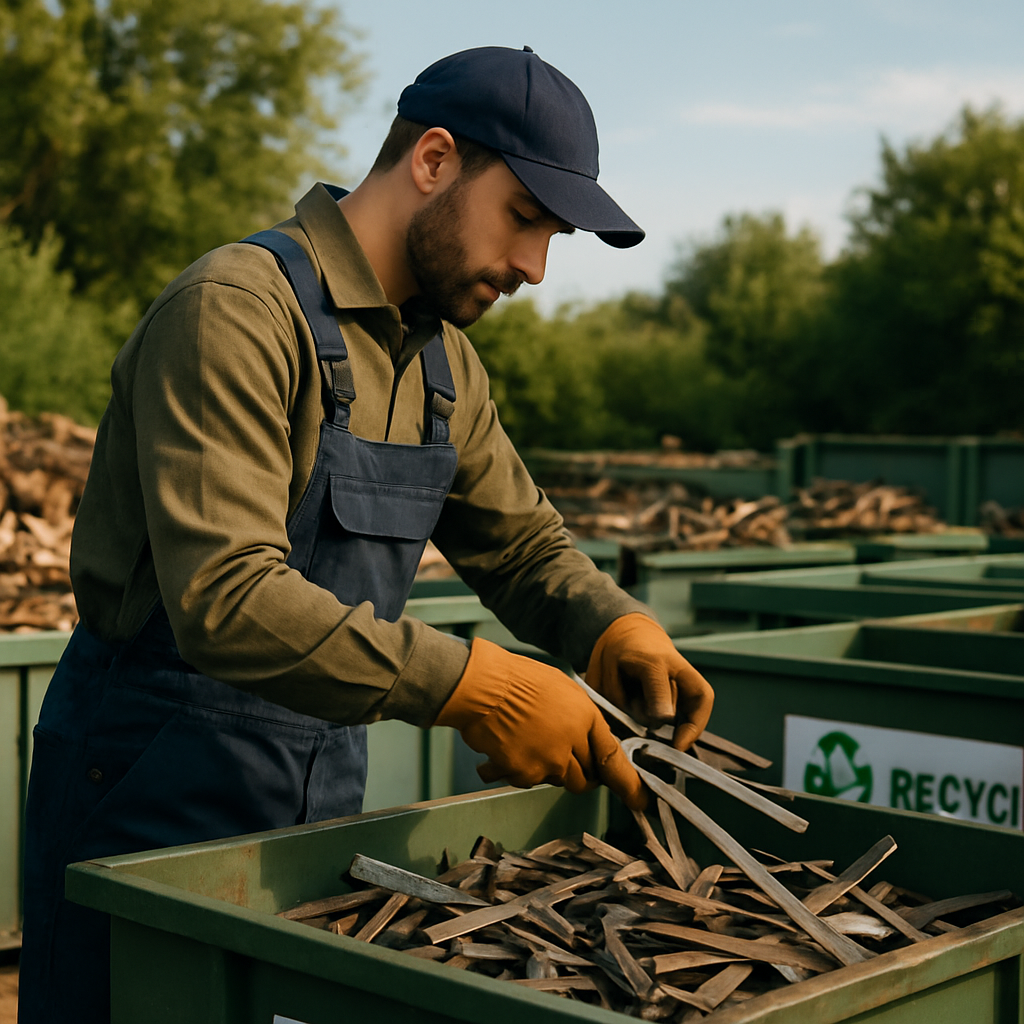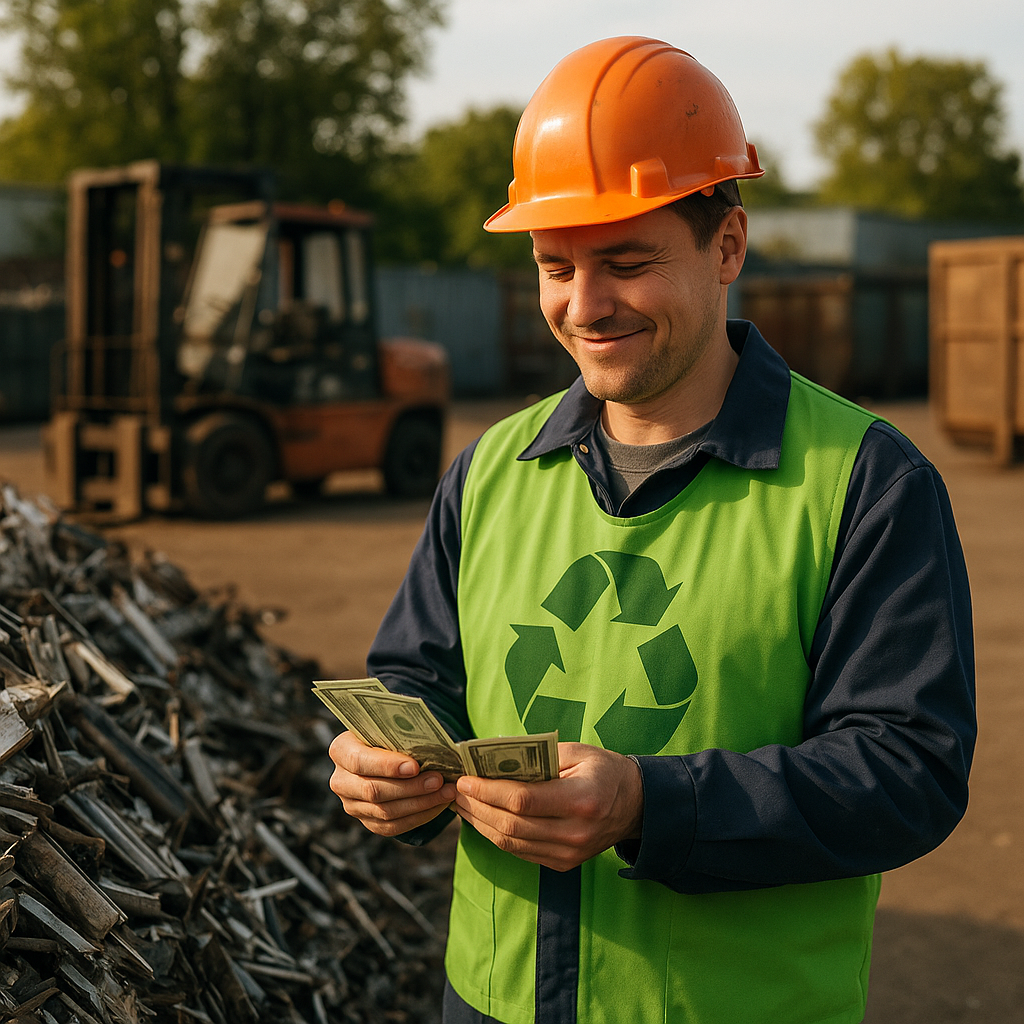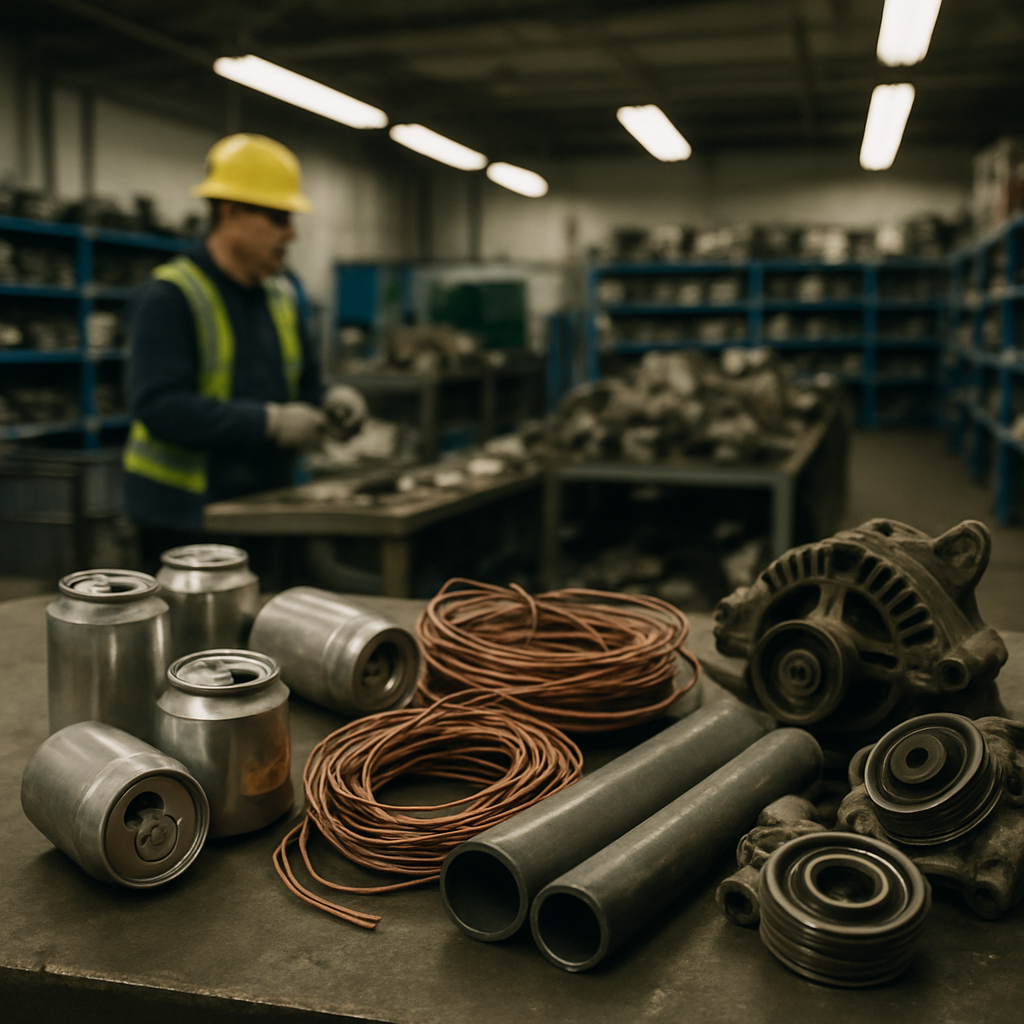5901 Botham Jean Blvd, Dallas, TX 75215
Scrap Metal Recycling: Benefits, Types, and How It Supports a Sustainable Future
August 20, 2025Scrap metal recycling involves collecting, sorting, and transforming discarded metal materials into valuable resources for reuse. Rather than ending up in landfills, these metals find new life in manufacturing and construction. This sustainable practice is vital to waste management systems and helps conserve natural resources.
Every day, numerous metal items reach the end of their useful life. From old appliances in garages to construction debris and manufacturing scraps, these materials contain metals that can be recovered and reused. The efficiency of metal recycling is remarkable – metals can be recycled repeatedly without losing their properties or quality.
Common recyclable metals include both ferrous metals (containing iron) like steel and cast iron, and non-ferrous metals like aluminum, copper, and brass. These materials originate from diverse sources – ranging from soda cans and car parts to plumbing fixtures and electronic devices. By identifying and separating these metals, recyclers process them into raw materials manufacturers use to create new products, completing a sustainable resource loop.
How Does Scrap Metal Recycling Benefit the Environment?

Scrap metal recycling offers significant environmental benefits beyond reducing landfill waste. By recycling metals instead of discarding them, we avoid the extraction of raw materials through environmentally harmful mining practices. This preservation of natural resources is crucial, given the finite quantities of metal ores in the Earth’s crust.
The energy savings from metal recycling are remarkable. Recycling aluminum retains 95% of the energy required to produce new aluminum from bauxite ore. For steel, the energy savings are approximately 60-75%. These savings result in reduced greenhouse gas emissions; the Environmental Protection Agency notes that metal recycling cuts carbon dioxide emissions by 29 million tons annually, the equivalent of removing 6.3 million cars from the road.
By conserving resources through metal recycling, we achieve measurable environmental benefits. Recycling one ton of steel saves about 2,500 pounds of iron ore, 1,400 pounds of coal, and 120 pounds of limestone. This conservation helps protect natural habitats from the disruption of mining operations, preserving biodiversity and ecosystem stability.
Pollution prevention is another critical benefit of scrap metal recycling. Metals degrade in landfills, potentially releasing harmful compounds that contaminate soil and groundwater. Metals like lead and mercury are particularly hazardous, posing significant risks to environmental and human health. Proper recycling safely processes these toxic materials, preventing them from leaching into the environment.
An often-overlooked benefit of metal recycling is water conservation. Traditional metal extraction and processing consume large amounts of water, straining local resources and risking contamination. Recycling requires less water, aiding in the preservation of this vital resource, especially in areas facing water scarcity.
What Are the Economic Benefits of Recycling Scrap Metal?

The scrap metal recycling industry significantly boosts economic growth at both individual and national levels. For individuals and businesses, selling scrap metal creates immediate revenue from materials that would otherwise be discarded. Many companies report substantial cost savings by converting disposal expenses into income at recycling centers.
On a larger scale, the Institute of Scrap Recycling Industries (ISRI) reports that recycling generates over $105 billion in annual economic activity nationwide. This figure highlights the sector’s role as a cornerstone of sustainable economic development, directly supporting more than 500,000 jobs across various skill levels, from collection specialists to advanced sorting equipment technicians.
Government revenues also receive a significant boost from metal recycling operations. The industry generates approximately $4.4 billion in state and local tax revenue annually, funding essential services like schools and infrastructure. Federally, about $6.8 billion is paid in taxes each year.
Local economies benefit particularly from recycling facilities. These operations serve as economic hubs, purchasing materials from local businesses and residents, creating a continuous flow of capital within the region. Businesses converting scrap metal into revenue rather than paying for disposal enhance their bottom lines.
Manufacturers greatly benefit from using recycled metals. Recycled materials usually require less energy than processing virgin ore, lowering production costs. For example, recycling aluminum saves up to 95% of the energy needed for primary production, leading to competitive pricing and increased market share.
The global economic impact is equally impressive. The United States leads as the largest exporter of scrap materials, generating about $28 billion in economic activity through exports. Approximately 26% of processed scrap in the U.S. is exported for manufacturing new products. This global reach creates jobs in logistics, shipping, and international trade.
For consumers, the economic benefits appear in more stable prices. The recycling industry helps reduce reliance on costly metal imports by recovering valuable resources domestically, strengthening economic independence and creating sustainable resource cycles. As competition for raw materials intensifies, domestic recycling’s value grows increasingly important.
What Types of Metals Can Be Recycled?

Nearly all metals found in everyday products can be recycled, making metal recycling one of the most efficient forms of material recovery in waste management. The process not only conserves valuable natural resources but also significantly reduces energy consumption and environmental impact compared to mining and processing raw materials.
Metals commonly recycled fall into two main categories: ferrous metals (containing iron) and non-ferrous metals (without iron). Each type has unique properties that make them valuable in the recycling stream.
Ferrous Metals
Ferrous metals include steel and iron products, which represent the largest segment of metal recycling globally.
Steel is the most recycled material in the world, with nearly 98% of structural steel being recovered and processed. When recycled, steel retains its strength and durability, regardless of how many times it is processed. A single ton of recycled steel saves 1.5 tons of iron ore, half a ton of coal, and reduces water consumption by 40% compared to producing new steel.
Steel recycling offers significant environmental benefits, reducing CO2 emissions by approximately 58% compared to using virgin materials. If all the steel cans recycled annually were stacked together, they would reach the moon and back more than three times.
Cast iron and wrought iron are also highly recyclable ferrous metals that retain their quality through multiple recycling cycles. These metals are commonly found in pipes, machinery, and structural components.
Non-Ferrous Metals
Non-ferrous metals don’t contain iron and often have a higher market value per pound than ferrous metals.
Aluminum leads non-ferrous recycling efforts due to its widespread use and excellent recyclability. This lightweight, corrosion-resistant metal can be recycled indefinitely without quality loss. Recycling aluminum uses only 5% of the energy needed to produce new aluminum from bauxite ore. Aluminum cans, aircraft components, and building materials are commonly recycled aluminum products.
Copper serves as an excellent conductor of heat and electricity, making it invaluable in electrical circuits, plumbing, and cooking utensils. It’s 100% recyclable with no difference in quality between recycled and newly mined copper. Remarkably, about 60% of all copper produced since the 1900s remains in use today, demonstrating its durability and recyclability.
Brass, an alloy of copper and zinc, offers strength, durability, and corrosion resistance. Common in bearings, gears, musical instruments, and decorative items, brass can be recycled indefinitely without losing its base properties or performance, creating a closed-loop system that reduces costs and carbon emissions.
Bronze, typically an alloy of copper and tin, is used in sculptures, electrical connectors, and marine applications. It’s stronger than copper and remains highly recyclable, though proper segregation during the recycling process is essential to maintain quality.
Other Recyclable Metals
Lead, despite its toxicity concerns, is completely recyclable and maintains its properties through multiple recycling cycles. Used in batteries, radiation shielding, and some building applications, lead must be recycled rather than landfilled due to environmental regulations.
Precious metals like gold, silver, platinum, and palladium can also be recovered from electronics and other sources. These metals maintain their value and properties indefinitely and are particularly important to recycle due to their rarity and the environmental impact of mining them.
Titanium, zinc, and nickel are also commonly recycled, each with specialized industrial applications and significant environmental benefits when recycled rather than newly mined.
The recycling infrastructure for metals is well-established in most regions, making it relatively easy for businesses and individuals to participate in metal recycling programs. By recycling metals, we conserve natural resources, reduce energy consumption, decrease pollution, and minimize waste in landfills.
Conclusion: The Future of Scrap Metal Recycling
Scrap metal recycling is one of our most effective tools for fostering a sustainable future. Its environmental benefits are vast, including resource conservation, energy savings, and notable reductions in greenhouse gas emissions. With the capacity to recycle metals repeatedly without degradation, scrap metal recycling exemplifies the principles of the circular economy.
The economic benefits are equally significant. The industry not only creates jobs but also reduces manufacturing costs and enhances resilience against resource scarcity. As technology advances with innovations in sorting, processing, and traceability, the efficiency and effectiveness of metal recycling will continue to improve. These technological advancements, along with increasing environmental awareness, position the scrap metal recycling industry for significant growth and impact in the coming years.
For more information on how your business or organization can engage in sustainable scrap metal recycling, contact Okon Recycling at 214-717-4083.
